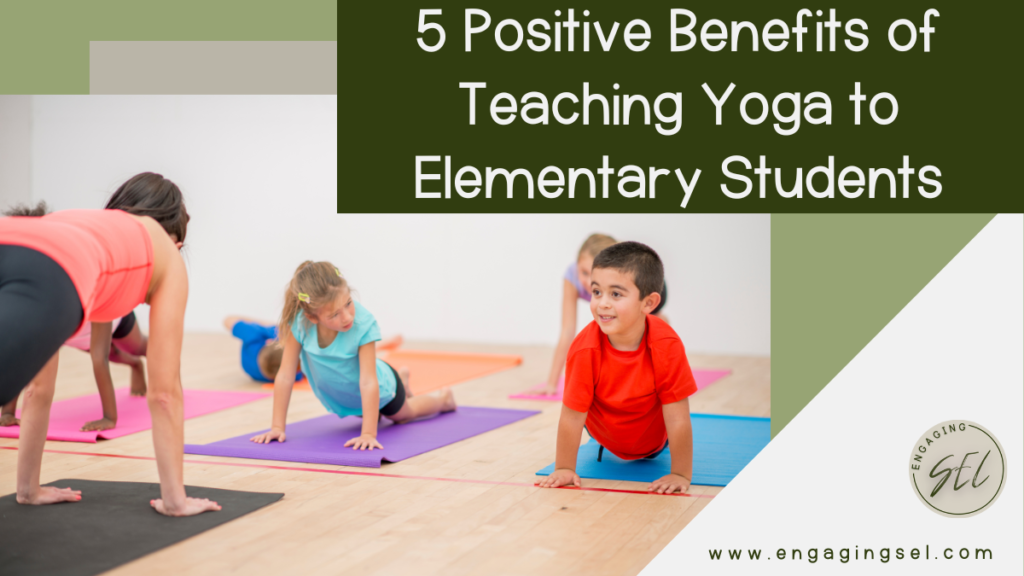
Introducing yoga into the classroom can have a profound positive impact on the students and the teacher. Yoga practice in the classroom can introduce numerous benefits such as improved physical, mental, emotional, and social well-being. The American Academy of Pediatrics (AAP) recommends yoga as a safe and potentially effective therapy for children coping with emotional, mental, physical, and behavioral health conditions. In this blog post, I will describe the numerous benefits teaching yoga in the classroom setting can have for young students and teachers.
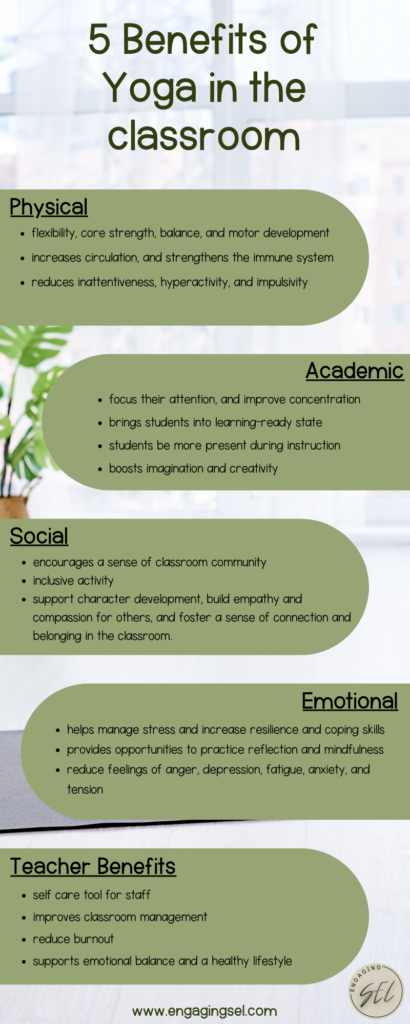
Physical Benefits
Yoga is mostly a physical activity so there would be many physical benefits that come along with classroom yoga practice. Yoga improves flexibility, core strength, balance, and motor development which is essential for young students. Along with increased coordination and body awareness, students can also reduce stress, increase circulation, and strengthen their immune system (Yoga 4 Classrooms). By relaxing the body and improving mind/body awareness students can also reduce symptoms of anxiety and depression. According to Harvard Health, yoga has been shown to improve symptoms of ADHD such as inattentiveness, hyperactivity, and impulsivity. Teaching yoga demonstrates the importance of staying physically active and will lay the foundation for a lifetime of healthy habits for students.
Academic Benefits
Integrating yoga into the classroom can introduce many academic benefits to students. Yoga practice combines physical movement with breathing exercises to help students focus their attention, and improve concentration. After completing a yoga flow, students will be in a learning-ready state that will help the students be more present during instruction. This will also help students feel more calm, relaxed, and comfortable in class. Yoga exercises support students’ imagination and creativity while also balancing their energy levels, whether high or low.
Social Benefits
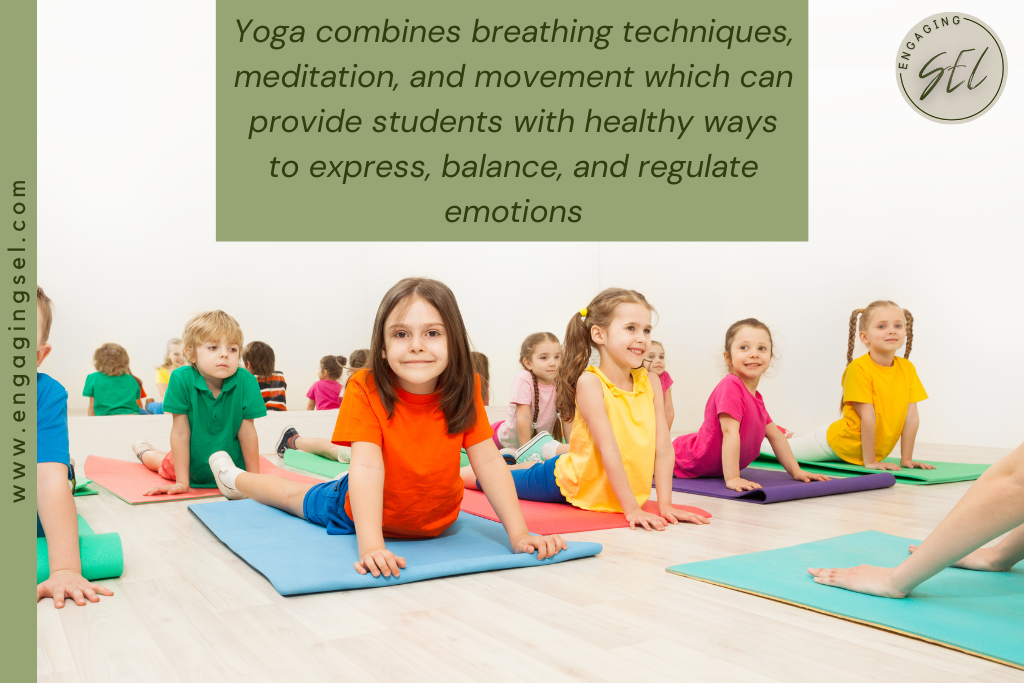
Yoga is a group activity that students will participate in together which encourages a sense of classroom community. Yoga is inclusive of people of any age, fitness level background, or ability so it is the perfect activity to bring students together with one common goal. Yoga practices support character development, build empathy and compassion for others, and foster a sense of connection and belonging in the classroom.
Emotional Benefits
Yoga teaches students healthy ways to express, balance, and regulate their emotions and behavior. Yoga combines breathing techniques with meditation and focus tools to help students manage stress and increase resilience and coping skills. It is also a perfect opportunity for students to practice reflection and mindfulness. Yoga also boosts students’ confidence, and self-esteem and allows for self-expression. Yoga has been proven to reduce feelings of anger, depression, fatigue, anxiety, and tension which leads to improved stress management lower cortisol levels, and improved mood.
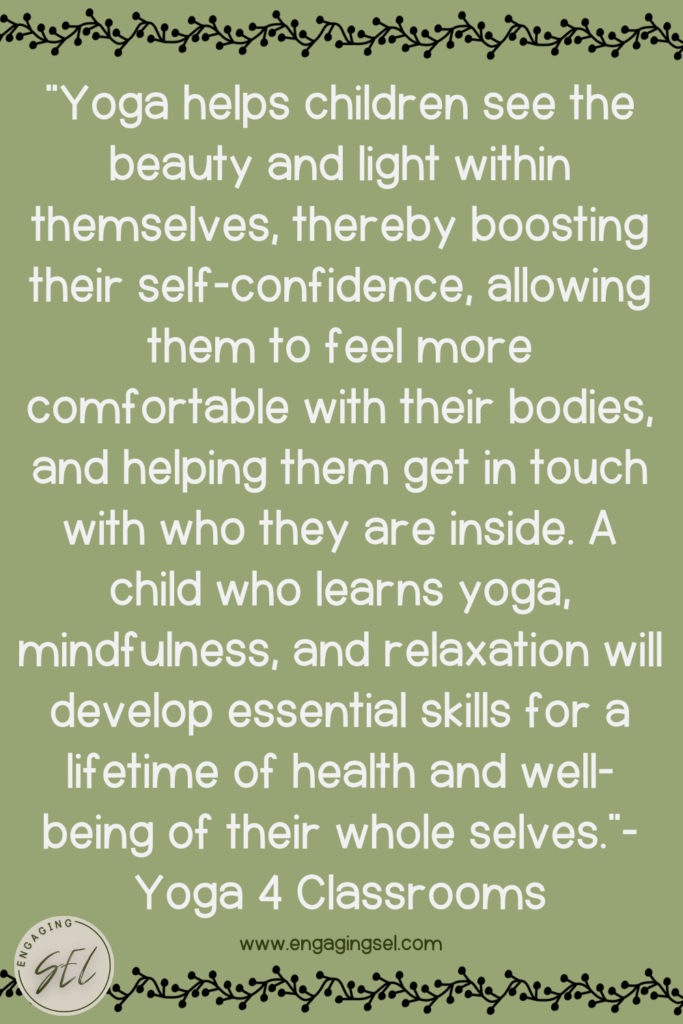
Benefits for Teachers
Self-care is just as important for teachers as it is for students. Yoga can provide many of the same benefits for teachers as it does for students. Yoga can help teachers decrease their cortisol levels to reduce stress and improve moods to increase teacher effectiveness and improve student outcomes. Yoga practice in the classroom can lead to more effective class management and emotional balance for teachers and students. Yoga can be used as a self-care tool for staff to reduce burnout, manage stress, and support an overall healthy lifestyle.
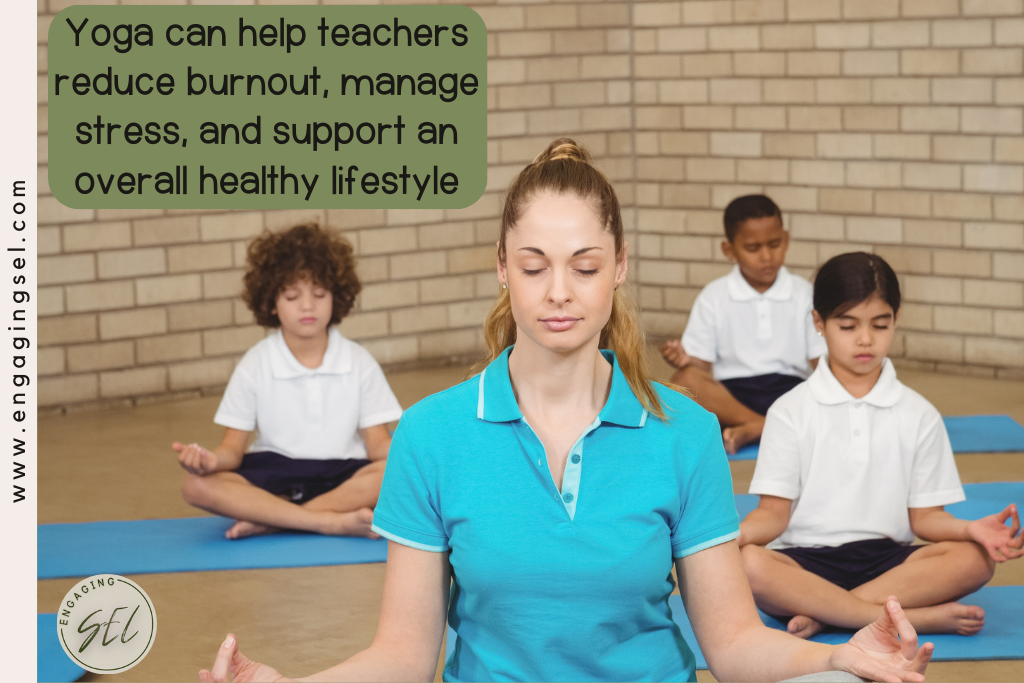
Teaching yoga to students encompasses so much more than just the physical aspects. Incorporating yoga into the classroom curriculum allows educators to support students academically, emotionally, and socially. I hope you learned some valuable information about how yoga can benefit you and your students in the classroom. I wish you well on your journey to start a yoga practice with your students.
Namaste
Mindfully yours,
Alyssa from Engaging SEL
Resources
Best Practices for Yoga in Schools by Traci Childress and Jennifer Cohen Harper 2015
The American Academy of Pediatrics (AAP)
Yoga 4 Classrooms https://yoga4classrooms.com

